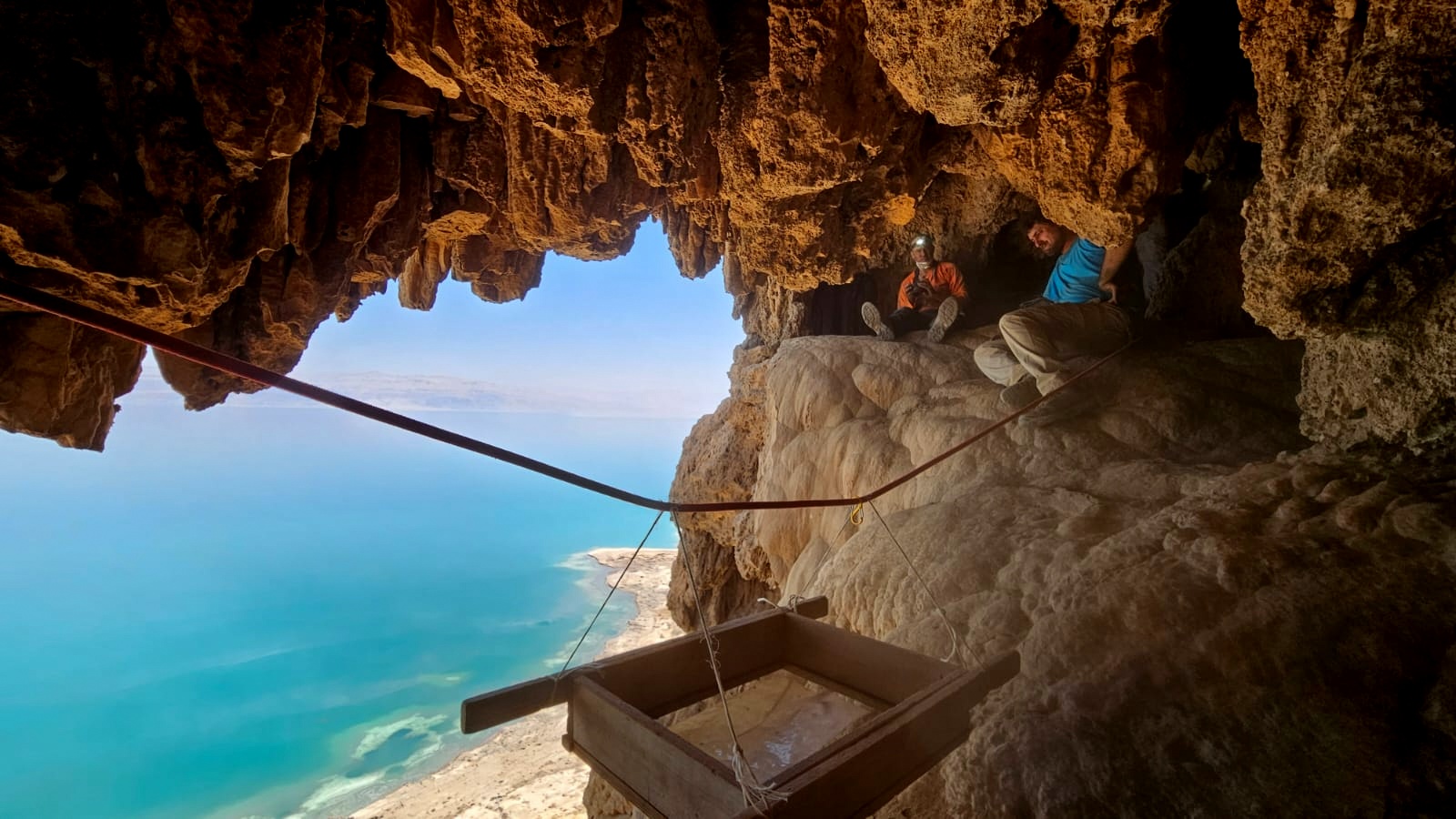The announcement last week of researchers finding a cache of four 1,900-year-old Roman swords in a cave in the Ein Gedi Nature Reserve in the Judean Desert overshadowed what may have been an even more remarkable find discovered in the same cave: a paleo-Hebrew inscription written in ink on a stalactite in the ancient script typical of the First Temple period.
About 50 years ago a paleo-Hebrew inscription was discovered in a cave near Ein Gedi. The partial inscription was painted on a stalactite with carbonite ink around the 7th century BCE. Dr. Asaf Gayer decided it was time to revisit the site to re-photograph the inscription using multispectral imaging. Such imaging has already done wonders to reveal invisible text on pottery sherds and other engravings. He invited his geologist colleague Boaz Langford to join in. They recruited Israel Antiquities Authority photographer Shai Halevi to record the expedition.
After photographing the stalactite, Gayer suggested they perform a thorough archaeological survey inside the cave. It was then that they discovered the four swords in their wood and leather scabbards and an extremely well-preserved Roman pilum (a shafted weapon). The story of the discovery of the swords caught the public eye but the story of the inscription was largely overlooked.
The story begins in 1973 when Ofra Aharoni, an instructor at the Ein Gedi Field School, found three lines inscribed in a cave with two levels of single chambers that are filled with stalactites. The caves were excavated the following year and the research was published in 1975 by Pesach Bar-Adon in the Israel Exploration Journal with photographs of the three-line inscription. Bar-Adon deciphered the text as reading: Blessed is God (Adonai) / Blessed XXX / Blessed is God (Elohim).
Gayer hopes the advanced photographic techniques will reveal more letters but admitted that he had received only partial results. He stated that he was able to clearly see the Hebrew letters bet, gimmel and yud following the word “Blessed,” along with a word-dividing dot that is typical of the First Temple era. Gayer’s reading of the word is “in the valley,” writing valley in a variant spelling that appears several times in the Bible. Using manually programmed computer imaging, Gayer attempted to reconstruct other partial letters and believes he can safely hypothesize that the following word is heh, mem, blamed, and heH or, in English, “the salt.”
He believes this is a reference to the local which was referred to in the Bible as the Valley of Salt (II Samuel 8:13 and Psalms 60:2). While Biblical scholars assumed these verses referred to the region of the Dead Sea, Gayer suggested that this inscription now confirmed that.
Gayer presented his initial findings at an IAA conference on Wednesday night and will publish an academic article after further research.




